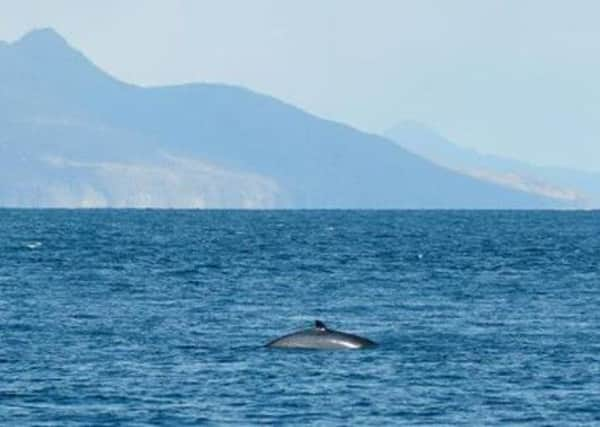Pictures: ‘Knobble’ the minke whale returns to Mull


Nicknamed Knobble due to the knobbly bit on his dorsal fin, the 30ft minke whale has returned to this same spot, nearly every year for the last 11 years.
It’s not just Knobble distinctive fin that makes him a big hit with tourists, he also has an endeering and inquisitive peronality.
Advertisement
Hide AdAdvertisement
Hide AdEwan Miles, a tour guide with Sea Life Surveys, a company who monitor animals around the Isle of Mull said: “I first saw Knobble in 2010 which was a wonderful experience. It’s incredible how distinctive his fin is.
“And he’s quite a character as well. Minke whales don’t particularly like company all the time, but whenever we see Knobble he’ll always come over to us and circle the boat. He’s very inquisitive.
“He’s also the most frequently seen whale we’ve got. He’s particularly faithful to the one spot that we cover.
“When we’re around his ground it will be noted to all the passengers and when the crew spot Knobble with the naked eye they they’ll often shout it out.
“The reaction from tourists when they see a whale is always big, but when they can actually identify one personally like Knobble it’s always even more special.”
Knobble’s regular appearances off Mull are also good news for sea life research around the Hebrides.
“Last week we saw Knobble three times which was fantastic, not just for the visitors, but also for us to study what he does, added Ewan.
“Migration is one of the big fascinations with the natural world and no one knows the movements of British minke whales in the winter months.
Advertisement
Hide AdAdvertisement
Hide Ad“They could head south to warmer waters or maybe north in range of whaling vessels in Icelandic seas.
“What we do know is that the same whales arrive back at their preferred feeding grounds as just is the case with many migratory species around the planet.
“It creates huge reward and fascination when a ringed swallow arrives back to your garden from Africa to the same nest site as the previous year but when you can identify a nine or 10 meter wild whale doing this, it is pretty special.”